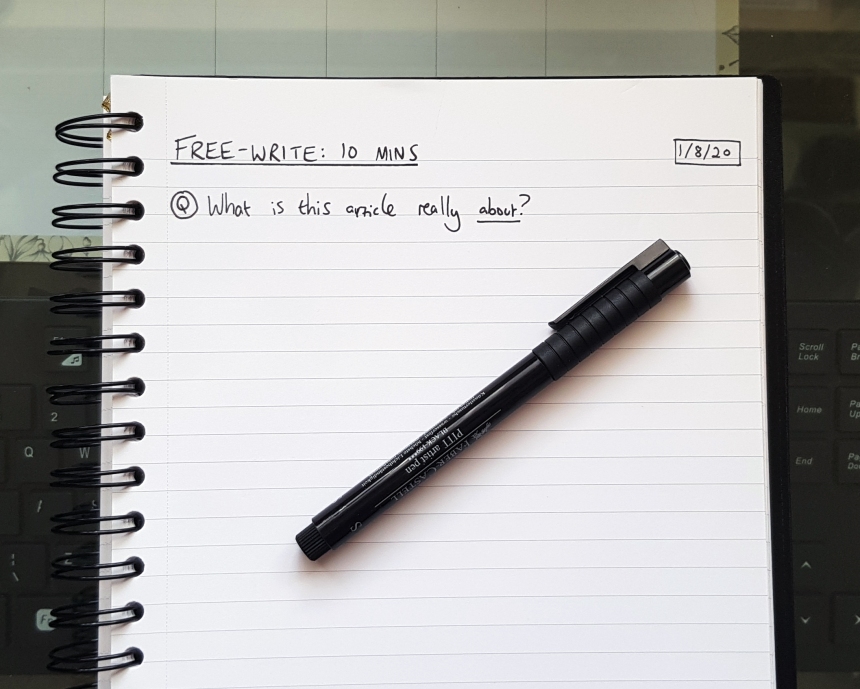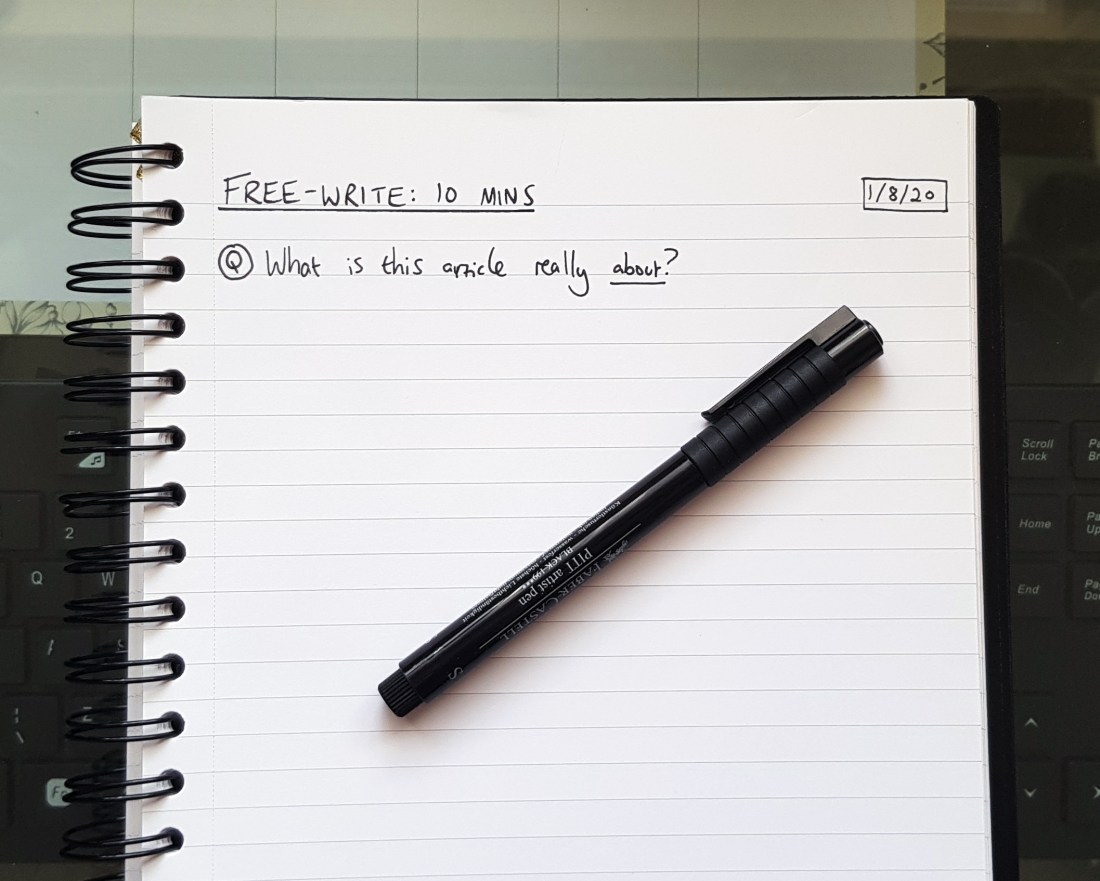I’ve been getting back into the swing of writing lately.
It’s been a fair few months since I last sat in front of a blank page. I took some time out to rest after submitting my thesis, and the final stretch of my PhD was much more about editing and formatting than writing.
After a bit of floundering around, I’ve fallen back onto some of my old PhD productivity strategies. They still work! It seems that the techniques I picked up during my time as a postgrad student have become a permanent part of my writing toolkit.
Here are my three secret weapons for getting words down onto the page.
Free-writing
I learnt this technique on a writing course a few years ago and now wouldn’t be without it. It’s extremely simple: you grab a notebook and pen/pencil, write yourself a juicy question at the top of the page (e.g. ‘What is this chapter about?’ or ‘What am I trying to say in this paragraph?’), and set a timer for 10 minutes or so. You spend the whole time scribbling down whatever comes into your head – no stopping, no thinking time, no reading what you’ve written. If nothing comes to mind, you write ‘blah blah blah’ until a thought pops up. When the timer goes off, read back through what you’ve written and underline all the things that surprise you.
This is my #1 troubleshooting strategy. If I hit a dead end while working on a draft of something, I pick up my notebook and spend 10 minutes scribbling it out. 8 times out of 10 I go back to my draft with a bunch of new ideas to try out.
For me, free-writing can take the terror out of a blank-page/new-chapter situation. It can get me past any writing roadblock, and helps me figure out what I’m actually trying to say in my work (something that can be surprisingly difficult…).
Distraction-blockers
Despite my best efforts, I am still seriously addicted to scrolling through social media (which is particularly unhelpful at the moment, given how much there is to get stressed about). It’s so easy to tab over to Facebook or Twitter if writing isn’t going so well. Then, KABOOM! My brain turns to mush and productivity is over for the day.
I use a couple of apps to help keep me focused. One is Forest (for phones), the other is SelfControl (for Macs). Forest and SelfControl both exist to limit your access to digital distractions. You set a timer for however long you like, and for as long as the timer runs you can’t stray into social-media scrolling.
SelfControl completely blocks your access to the sites you specify as being unhelpful (my blocklist includes Facebook, Twitter, Pinterest, news sites, and Etsy). There’s no way to turn the app off until the timer reaches zero.
Forest is clever: when you start the timer, a digital tree is ‘planted’ in your digital forest. If you try to use your phone before the timer ends, you kill the tree. If you make it to the end of the timer, the tree stays in your forest. When you’ve successfully grown a certain number of digital trees, you click a button to plant a real tree in a real forest! Helpfully, you can still use your phone if you really need to. (You just have to live with the guilt of having killed a fictional tree. It’s weirdly effective.)
Routine
For me, routine is everything. I wrote this post a year and a half ago about the daily patterns I’d settled into. I still start every work day with the same mug, same fairy lights, same timings. I write in the morning and do other things (admin, emails, meetings) in the afternoon. I find the regularity of it all so helpful for kicking my brain into work mode. Sticking to my routine also makes it easier to switch off once my working hours are over.
I’m always interested in finding new ways to Get Things Done, but I’ll be sticking to these tried-and-tested strategies until they stop being useful. Do you have productivity techniques that you swear by? Let me know!
If you like reading/thinking about writing, check out:

